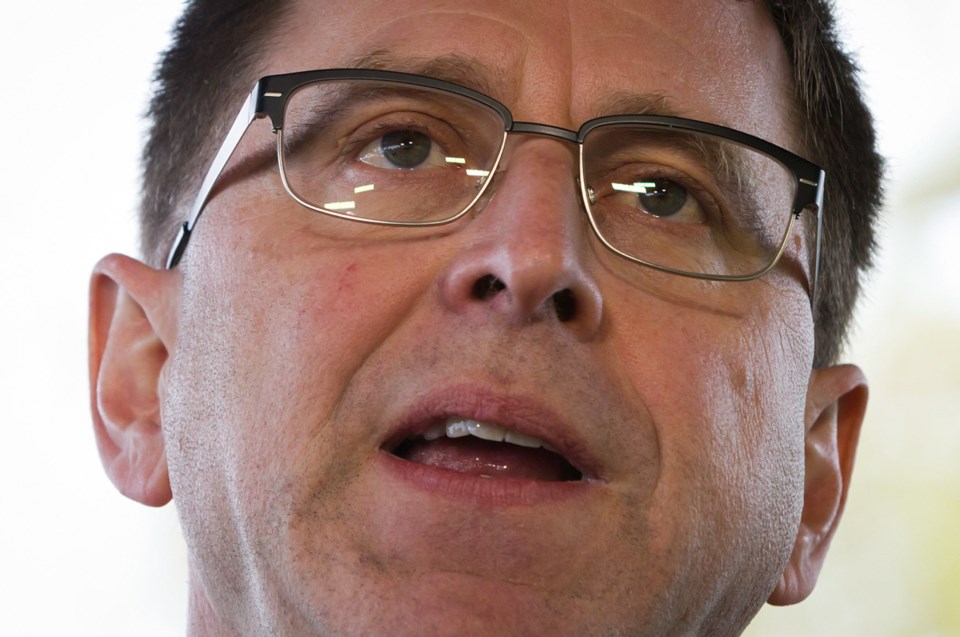An urgent primary-care centre being built in Nanaimo will open in June, B.C. Health Minister Adrian Dix said Wednesday.
“I’m really fired up to be here,” said Dix at the Vancouver Island Conference Centre. “I’m very excited about this day.”
Before the Jan. 30 byelection in Nanaimo, Dix had said the city would be the next to get a new medical centre.
It will be the seventh urgent primary-care centre to open in B.C. under the NDP government’s primary-care strategy and the second one on Vancouver Island. Fifteen are planned for the Island over the next three years, although the locations of the remaining 13 are still being determined, based on areas of greatest need.
Urgent primary-care centres offer medical treatment that’s needed within 12 to 24 hours for conditions such as sprains, urinary problems, ear infections, minor cuts or burns. One of the goals is to alleviate pressure on hospital emergency rooms and serve the large population of people without family doctors.
About 15,500 people in the Nanaimo region do not have a primary-care provider, and for those who do, same-day access is often impossible to get, Dix said.
There were about 780,000 people in B.C. without a family doctor when the NDP took power in 2017.
The new Medical Arts Urgent and Primary Care Centre in Nanaimo is on South Terminal Avenue in the Port Place mall and will be open seven days a week to support up to 25,000 additional patient visits per year.
“That’s a significant improvement to primary care here in Nanaimo,” Dix said.
The centre is an expansion to an existing medical centre offering team-based same-day care, as well as co-ordinated services for frail seniors and people in need of mental-health and substance-use treatment. The annual cost of extending hours and adding care is estimated to be $2.7 million.
The expanded centre will add 14 full-time-equivalent health professionals, including four FTE doctors, 3.4 FTE mental-health and substance-use clinicians, and 3.4 FTE nurses.
The goal is “to see improvement to the 21 per cent of people who go to the emergency room who would be better suited to a primary-care setting,” Dix said.
Since the $3.44-million Westshore Urgent and Primary Care Centre in Langford opened last November, more than 7,500 patients have been seen.
Meanwhile, Esquimalt Mayor Barb Desjardins said a doctor shortage in her township and neighbouring Vic West amounts to a crisis.
The closing of the Esquimalt Treatment Centre last year and the loss of the Westside Integrated Health Centre in Vic West in 2015 left the region with just a single walk-in clinic, at Esquimalt Plaza.
Residents of Esquimalt — with a population of 17,655 — are being forced to rely on hospital emergency departments, said Desjardins.
A report on the health needs of Esquimalt residents is expected to go to council on April 15. Desjardins plans to broach the question of where a temporary medical facility could be located, and where a 3,000-to-6,000-square-foot commercial space could be built to be ready if the province makes funding available.
“If we don’t have a plan in place and that funding is available for GPs and practices, we may lose that opportunity because we weren’t ready and other communities are asking for it,” she said.
While the problem of lack of access to doctors is concerning, it’s not unique to Esquimalt or Victoria, Dix said. “We have to look at these things regionally. We’re working urgently now to develop a primary-care network.”
As part of the province’s primary-care strategy, the goal is to recruit 200 family doctors, 200 nurse practitioners and 50 clinical pharmacists.
— With a file from Lindsay Kines



